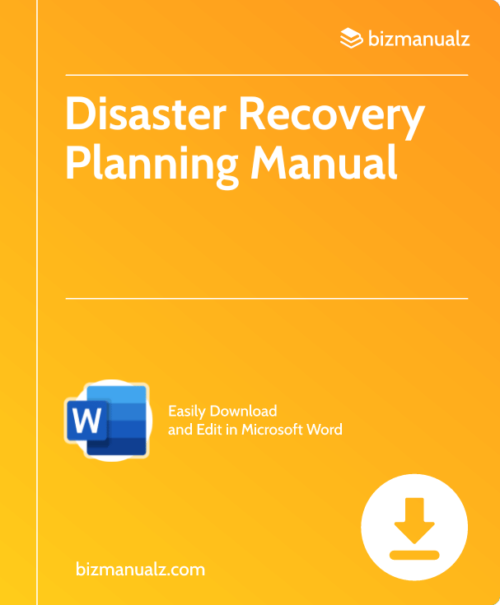Social Media Strategy Procedure Template Word
The Social Media Strategy Procedure Template Word is a comprehensive guide that helps businesses develop a successful social media strategy. This template is designed to help businesses create a plan that aligns with their goals and objectives, and helps them achieve their desired outcomes.
The template includes step-by-step instructions on how to create a social media strategy, including how to identify target audiences, create content, and measure success. It also includes templates for creating a social media calendar, tracking metrics, and analyzing data.
With this template, businesses can create a social media strategy that is tailored to their specific needs and goals. It provides a framework for businesses to develop a plan that is both effective and efficient, and helps them achieve their desired outcomes.
The Social Media Strategy Procedure Template Word is easy to use and can be customized to fit any business. It is designed to be user-friendly and includes clear instructions on how to use each section of the template. Businesses can use this template to create a social media strategy that is both effective and efficient, and helps them achieve their desired outcomes.
Overall, the Social Media Strategy Procedure Template Word is an essential tool for businesses looking to develop a successful social media strategy. It provides a comprehensive guide that helps businesses create a plan that aligns with their goals and objectives, and helps them achieve their desired outcomes.
Social Media Strategy Procedure
The Social Media Strategy Procedure helps to engage individuals who might not be engaged by other means of advertising (e.g., print, TV), to improve the company’s visibility, reach, and influence, and to establish a framework for developing and achieving social media objectives.
The company should use social media to engage potential target markets, share interesting and relevant content, and gather opinions and other market information.
The Social Media Strategy Procedure applies primarily to the company’s Marketing department; other departments (e.g., HR, Sales) will be involved to a lesser degree. (16 pages, 2,400 words)
Social Media Strategy Responsibilities:
The Marketing Manager should develop and implement the company’s social media plan, as well as monitor and report on relevant social media activity. The Marketing Manager shall also review social content for relevance and potential value.
The President should have final approval of the social media plan.
Department Managers (e.g., Sales Manager, Customer Relations Manager) should have input to the social media plan, contributing information and their opinions. They or their assigns may also have roles in the implementation of the social media plan.
The Human Resources Manager should ensure that all employees are aware of the company’s social media plan; the HR Department should maintain related records (e.g., form MP1080-5).
Social Media Strategy Definitions:
Blog – Shortened form of the term “weblog”; part of a website where one posts regular entries. These entries may consist of opinion pieces, news, case studies, a newsletter archive, or anything else an individual or organization wants to share with other social media users.
Relevance – How well the company’s social media message aligns with social networkers’ needs.
Social media – Websites and applications used for social networking.
Social media marketing – Building a social network of followers and connections by sharing interesting and relevant content, allowing a person / organization to engage more individuals and drive business their way.
Social networking – Using dedicated websites and applications (e.g., Twitter, Tumblr, Facebook, Google+, Pinterest, Linkedin) to communicate informally with other social media users or find people with similar / shared interests. Organizations often use social networking to break down barriers between themselves and potential customers, sources of funding, etc., opening opportunities for exchange of information and opinions, as well as conducting business.
 Social Media Strategy Procedure Activities
Social Media Strategy Procedure Activities
- Developing the Social Media Plan
- Developing Social Media Policy
- Implementing the Social Media Plan
- Monitoring the Social Media Plan
- Updating the Social Media Plan
Social Media Strategy Procedure References
- Sales & Marketing Policy Manual, section 5.1.9, “Social Media Strategy”
- MT1010 INTERNET MARKETING
- Employee Handbook, Bizmanualz® Human Resources Policies and Procedures Manual, Bizmanualz, Inc., 2014. ISBN #978-1-9315-9110-2.
Social Media Strategy Procedure Forms
- Social Media Planning Worksheet
- Social Media Plan
- Social Media Calendar
- Social Media Log
- Social Media Policy & Acknowledgement
Benefits of Social Networking
Social networking isn’t just about reaching a completely new audience, although that is one of the great benefits.
1) Social Networking Is Communication
The administration says it wants to provide as much information as possible to the American people. As a company, the more information out there about you, the better. Listing your products and services are, of course, important, but what about employee bios, news about changes in organization or case studies about clients you’ve helped?
2) Social Networking Provides Transparency
3) Social Networking Enables Participation
Networking Is Part of Social Networking
You can’t take the networking part out of social networking. If all you’re doing is pushing your product onto an unknown audience, they’ll quickly be turned off, or “un-friend” you (gasp!). But if you become part of the conversation and offer them something of value, whether it is your blog or simply pointing to an interesting article you read this morning, they’re much more likely trust you and participate.
Of course, as with face-to-face networking, social networking is as much about the relationship and conversation as it is about then leveraging that relationship into something positive for your company. No one wants to do business with an unknown. The more you get your brand out there and form trusting, mutually beneficial relationships, the better. Social networks simplify and amplify that process.
So, are social networks time suckers or are they useful marketing and brand-building tools? The answer everyone seems to be coming back to is that social networking tools like Twitter and Facebook can be both. If you don’t have a plan when entering the fray, they can be a drain on your time and leave you with unproductive hours upon hours of entertainment. On the other hand, there are great business uses for the networking tools beyond simply getting your name out there.
Social Network Planning
It’s easy to get lost “researching” social networks. Here are a few tips to keep from drowning in the sea of links and info-tainment.
- Plan Ahead
At the beginning of the week, allot yourself a certain amount of time that you will engage in your social networks each day. It’s important to realize that even though you only have a certain amount of time, it should be distributed throughout the day in order to reach the widest audience. So maybe it’s one hour a day, split between four 15-minute sessions. If you have a large number of friends or followers, you may need more time to fully engage, answer messages, etc. - Measure Results
What was your intent when you first signed up for a service? If it was to drive traffic to your website, has it been successful? How did you define “success”? Measuring your results against a baseline or goal will tell you whether your social networking initiative is a good use of time and resources. If it’s not as successful as you had hoped, maybe it’s time to revise your strategy. - Take it Slow
Once you join one network, it’s tempting to start signing your company up with every social networking site available. But, slow down…do you really have time each morning to check all of your messages on Facebook, Twitter, Plaxo, Ning networks, LinkedIn, etc.? Unless you’re a social media marketer, the answer is probably “no”, so you should start with one or two, and build from there. Once you have the brand and personality set, it becomes easier to distribute networking responsibilities throughout your organization and look into creating a broader presence.






















T. Mikkola (verified owner) –
Good. Would be nice have more information regarding the social media itself ( Facebook, Instagram..)